A chef’s tools are an extension of who they are.
Knives, most especially, aid them in performing their task and is an important part of their arsenal. A good knife allows the user to slice, cut, or chop with ease, delivering beautiful fillets of meat, delicate deboned fish, or vegetables sliced with surgical precision. We asked six different chefs what their favorite knives are and why they picked them over the rest.
Francis Lim, Tipple and Slaw
What he needs
I always need two chef’s knives—sizes seven and 10 inches. The first for just about anything, the latter for big cuts of meat or chopping a large volume of ingredients. I also need a paring knife. I use the basic one mostly to peel vegetable skins and for some areas of meat or fish.
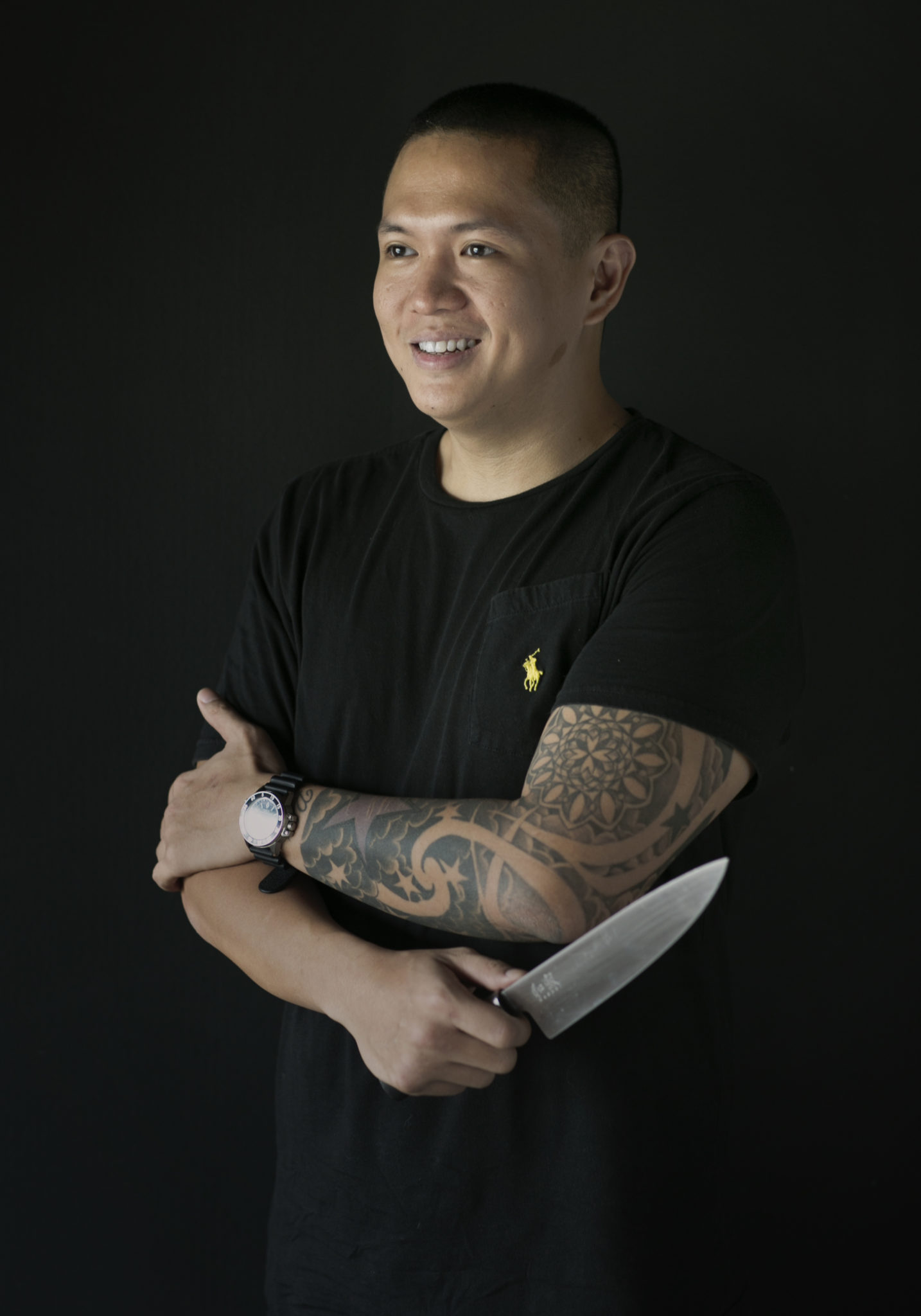
Favorite knife
Shun chef’s knives. Cool kid ka kasi pag may Japanese knife ka but it turned out to be Western after all. But it’s actually a really good brand and it’s easy to maintain because they’re very basic knives. I also use Wasabi chef’s knives. Also, Henckels paring knives—these are what I got used to in culinary school. I also use Touchstone paring knives because their handles are always thick and so are the blades. I also like Global knives—very convenient because it’s one piece, so nothing breaks. I like one-piece knives better than ones with holsters because although knives with holsters are pretty convenient when it comes to the grip, over time, they accumulate bacteria if you don’t take care of them properly.
Price range
- Shun – P5,000 to P8,000
- Henckels – P1,000 to P2,500
- Global – P5,800 to P7,1000
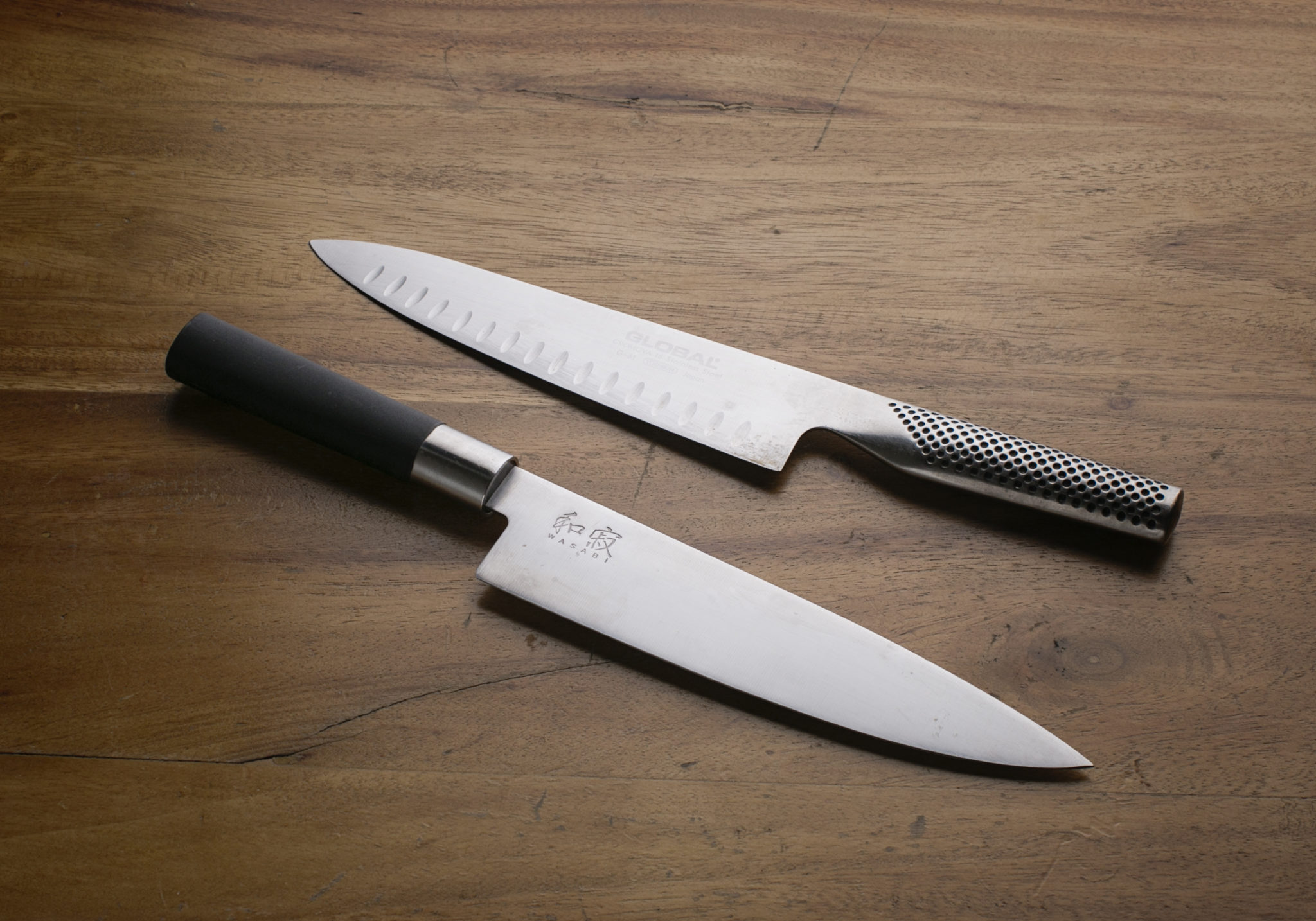
When investing in a knife, how much should chefs spend?
I think P5,000 is the limit. It’s useless to invest in a knife that you don’t understand. Some people buy expensive knives thinking that they are always better than cheaper ones.
Share a tip to young chefs looking to buy their first professional knife
Get something you’re comfortable with, not something that you just think looks cool. Get something that you can actually use. I mean, small knives can actually do big things. A bigger knife can also do things but to a certain extent. There are a lot of sizes also that they should look into, not it being big doesn’t necessarily mean they’re good knives. Everything has its purpose, so just really do your research.
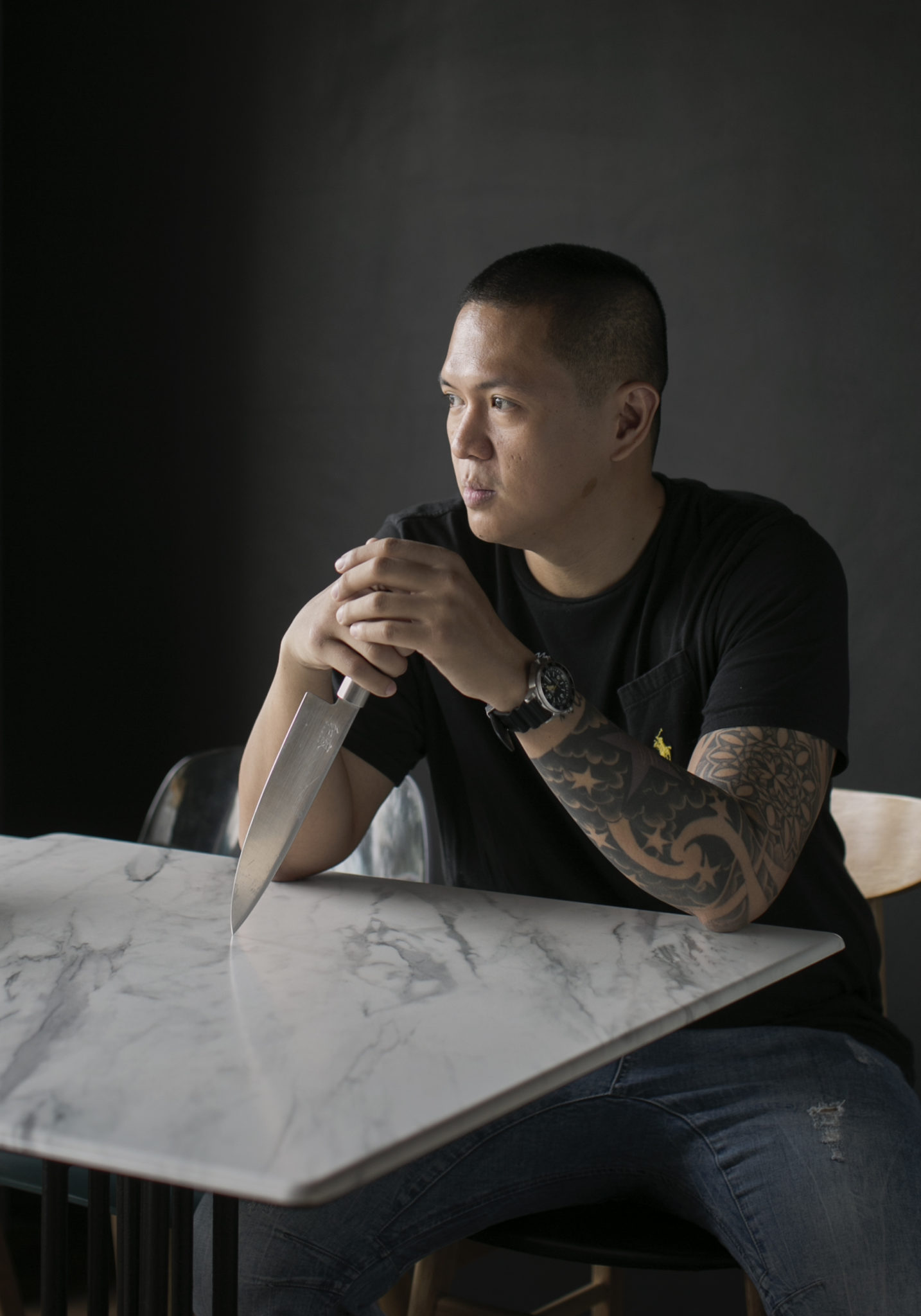
Saito Takeru, Kazunori
What he needs
For me, it’s all about the feel and the weight.
Favorite knife
Yoshihiro Yanagi knife for cutting sashimi and the Deba knife for cutting fish. They’re thin blades that have been made in Osaka for more than a century. They’re a chef’s dream.
Price range
- Yanagi – around P100,000
- Deba – around P50,000
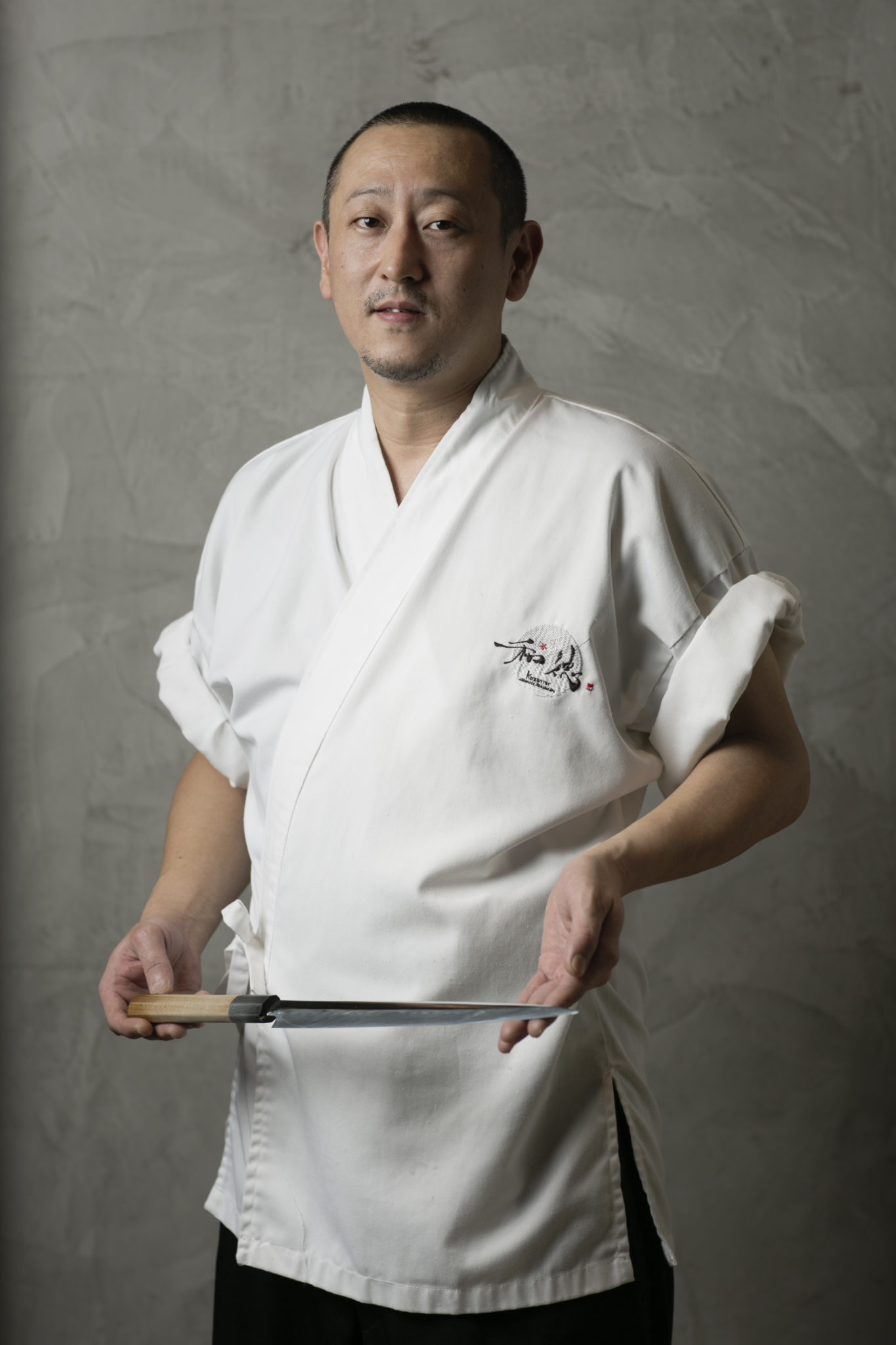

Miko Calo, Metronome
What she needs
Something durable and that stays sharp for a long time. I need my knives to be very sharp for turning and paring vegetables, for filleting fish, and for butchering.
Favorite knife
I love my Masamoto chef’s knife and fillet. I’ve switched to Japanese knives (with Western handles) eight years ago.
Price range
P8,000 to P12,000
Patrick Go, Stall #5 at The Grid
What he needs
It needs to be solid steel from tip to handle; stainless; very sharp; good grip; and has good weight.
Favorite knife
Henckels chef’s knife is great for general cutting and slicing. I also use their paring knife for cutting small pieces of food. The Masamoto Yanagiba is a sushi knife I like to use. It stays very sharp for a long time.
Price range
- Henckels – P4,000 to P7,000
- Masamoto – P7,000 – P10,000
Share a tip to young chefs looking to buy their first professional knife
For standard home or commercial use, I usually recommend Tramontina and Victorinox knives for their durability.
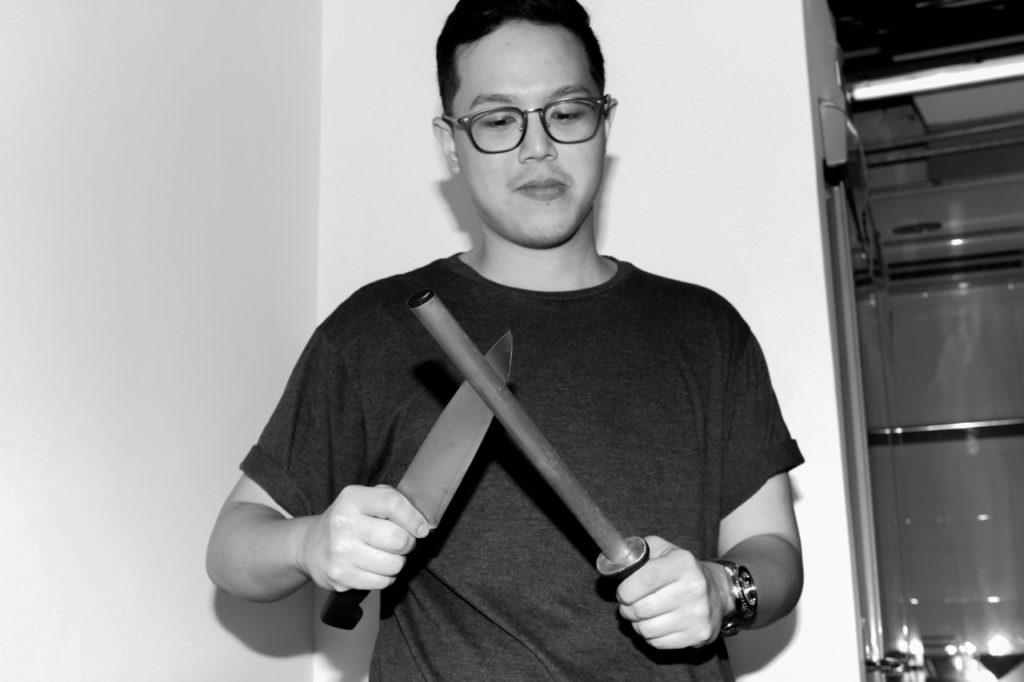
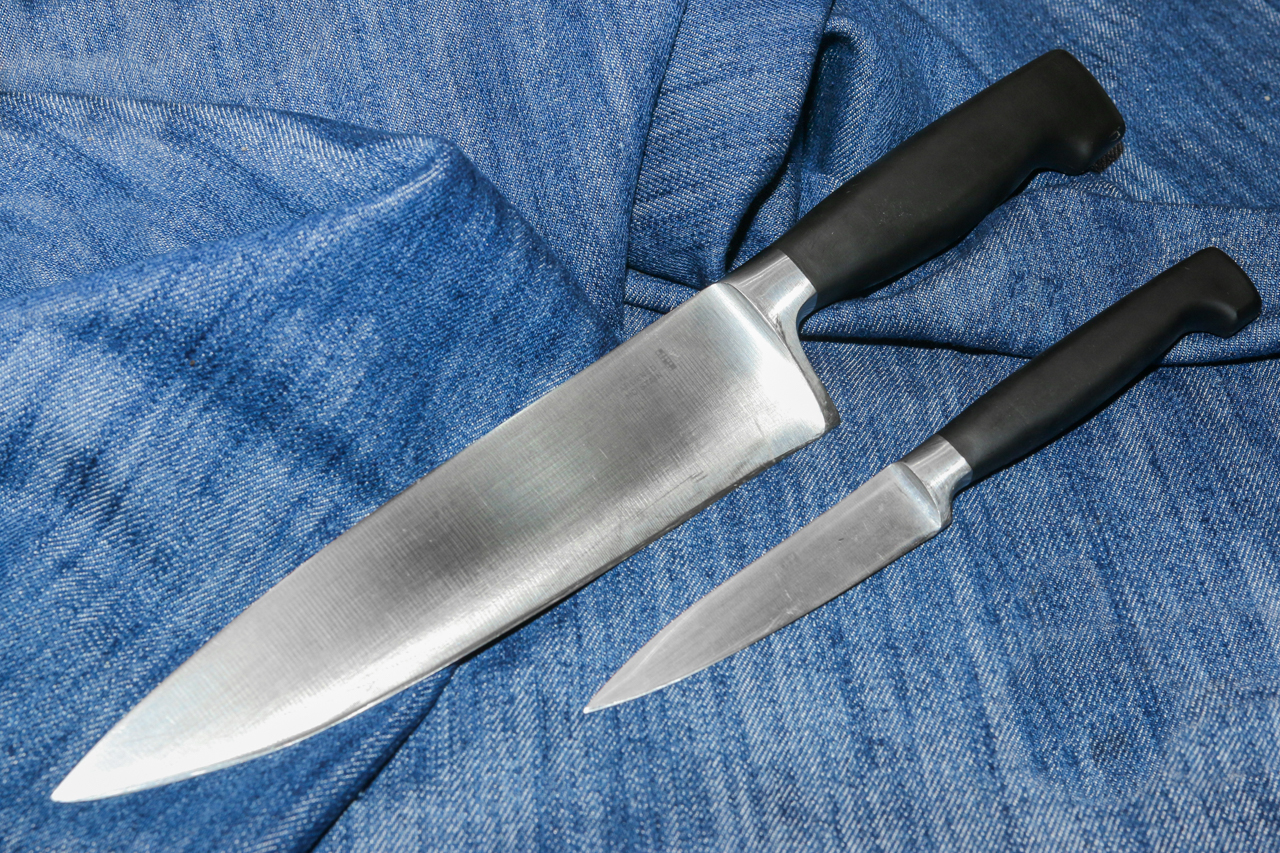
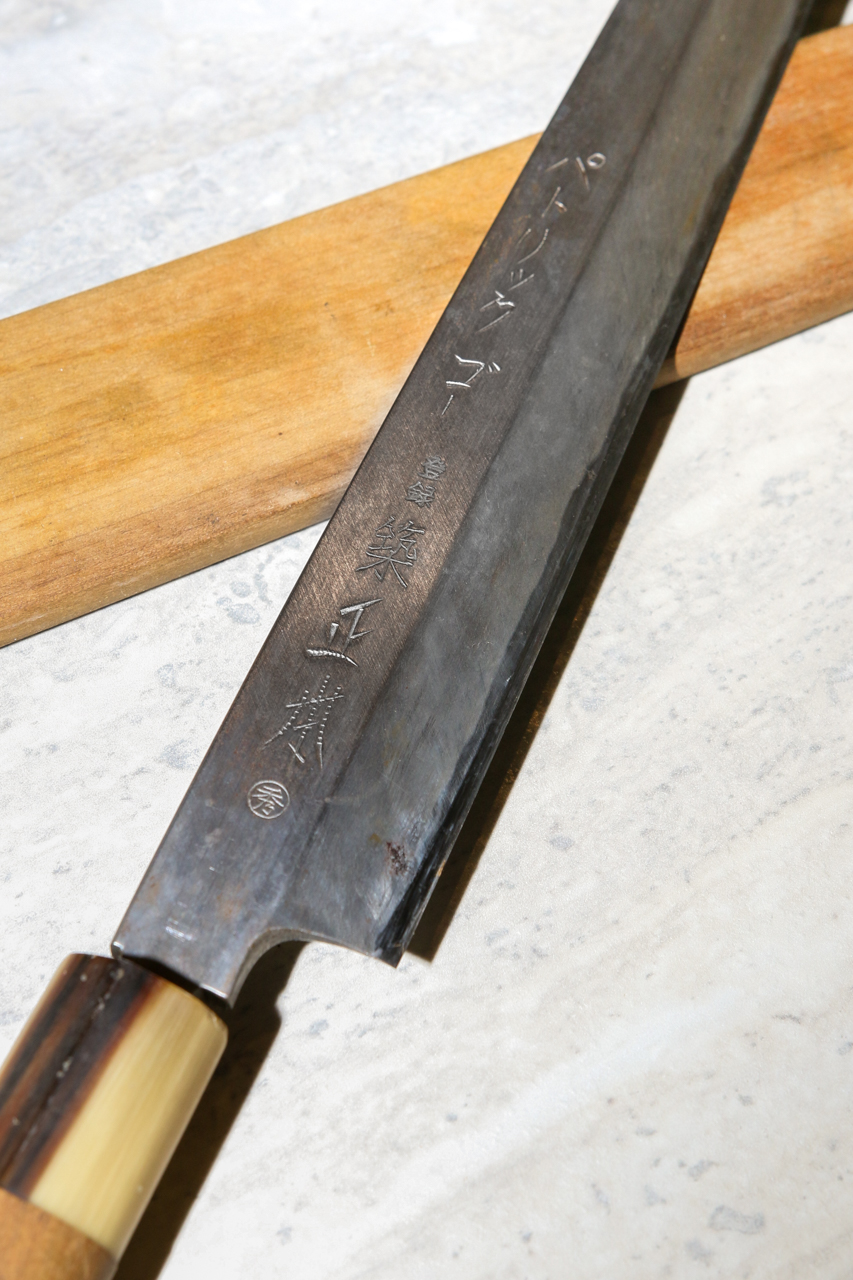
Hervé Clair, Mireio at Raffles
What he needs
For me, the quality of a knife is first. It has to be light and easy to handle. The handle has to be ergonomic; the blade can’t be too tough for easy sharpening but not too light so it can last a long time.”
Favorite knife
Takayuki Damascus VG10. It’s light, really sharp, and easy to handle. It has this wave because the blade is made from folded steel. It also mixes two kinds of steel—one that’s strong and one that’s a little softer. This is helpful because if the steel is too soft it will break easily and if it’s too strong you cannot sharpen it. So it’s good to have that balance.
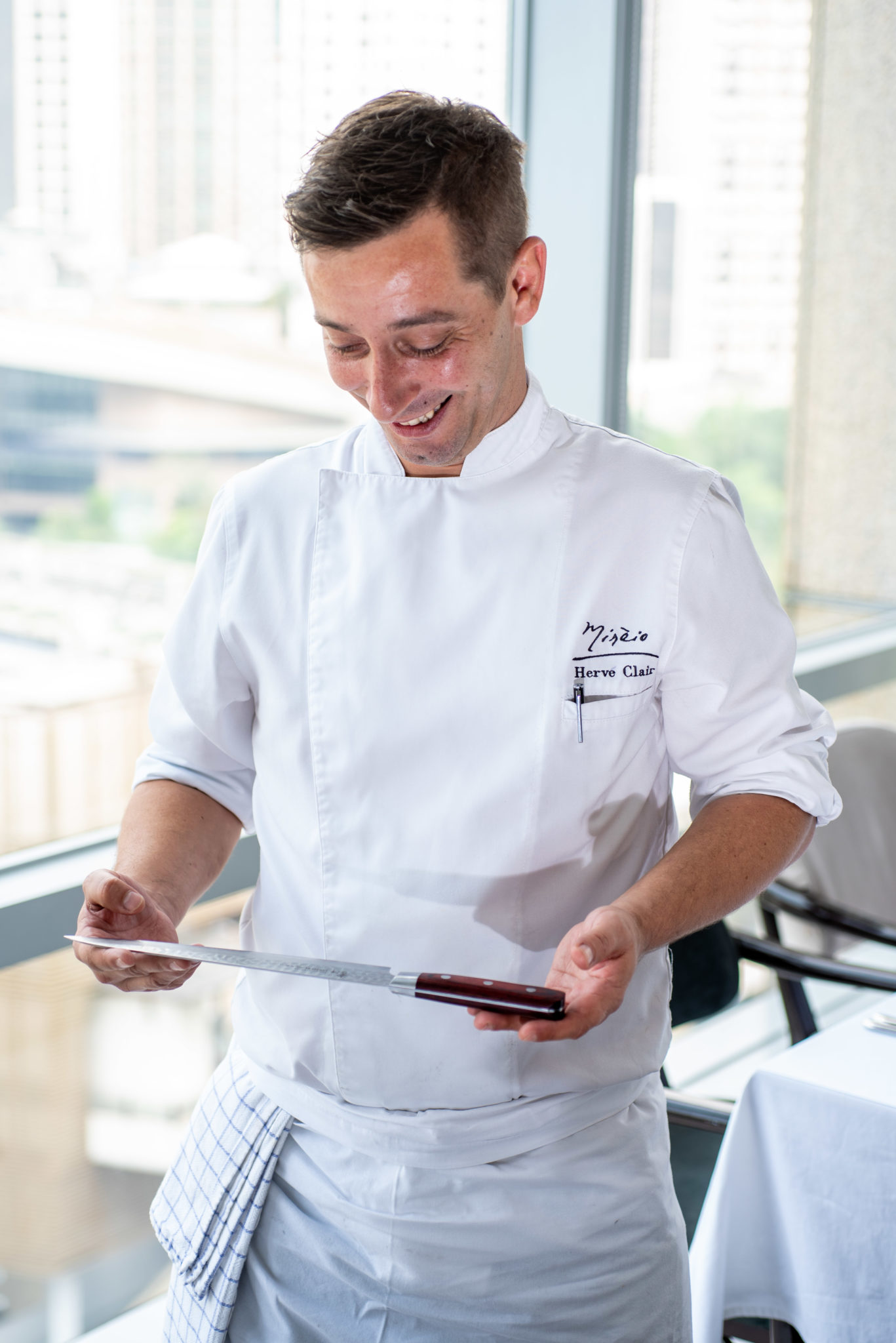
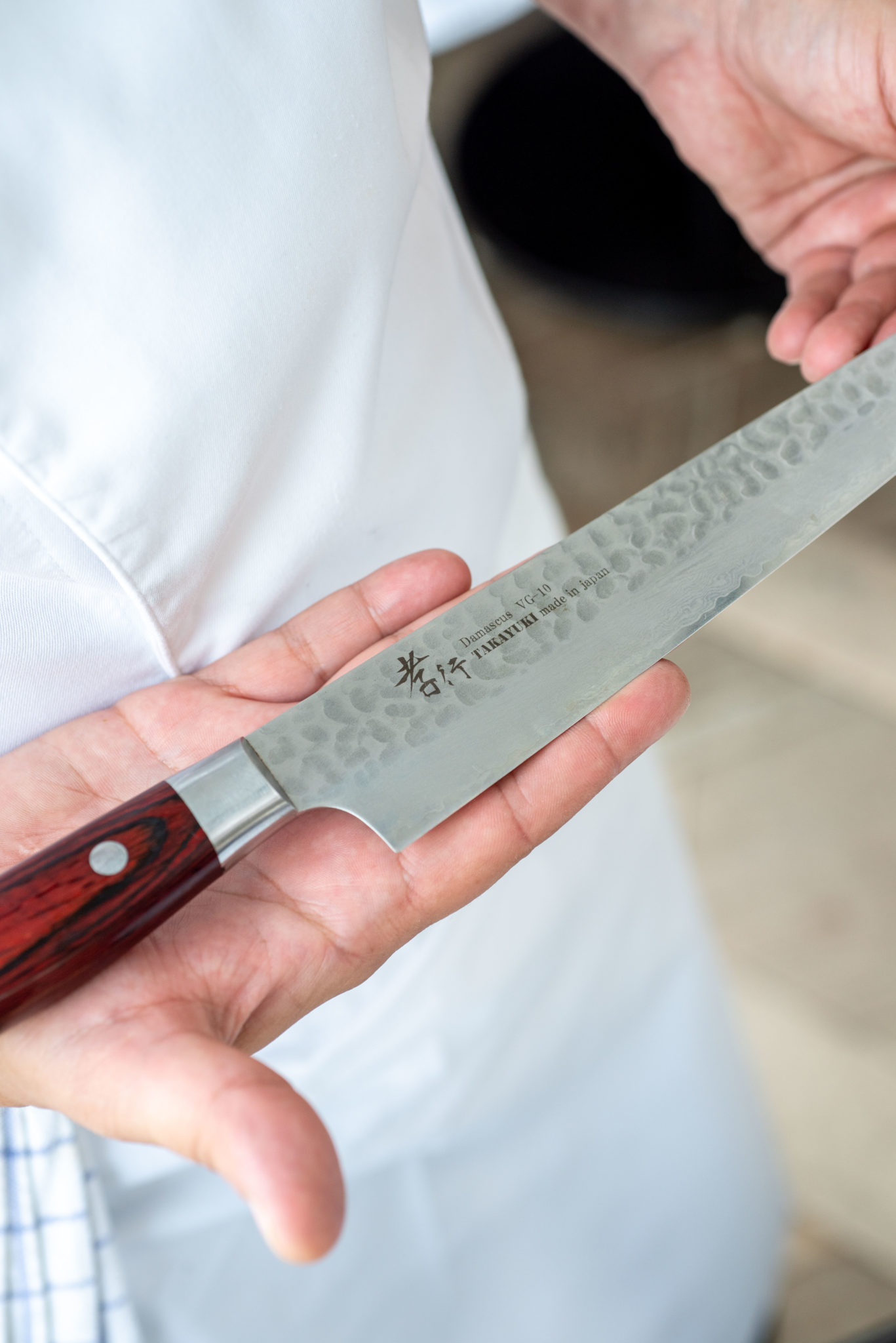
Price range
Around $700
When investing in a knife, how much should chefs spend?
It depends on what you want to do with the knife—if you want to keep it for long or just use it occasionally. I spend between $500 to $700 on each knife, but I keep it for long.
How do you maintain your knife?
Every time I use my knife I sharpen it. It’s really about maintaining my knives’ sharpness, at least for me.
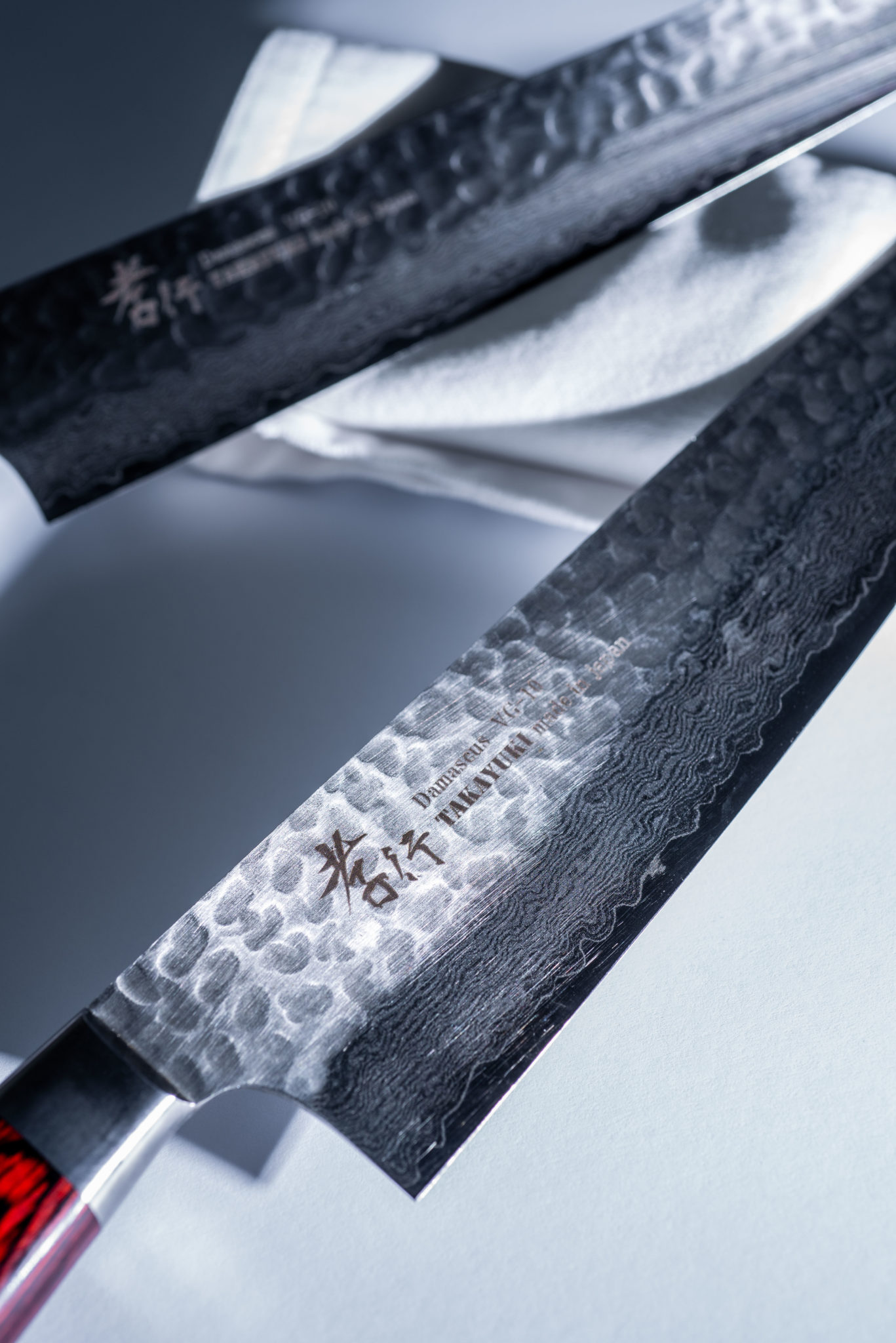
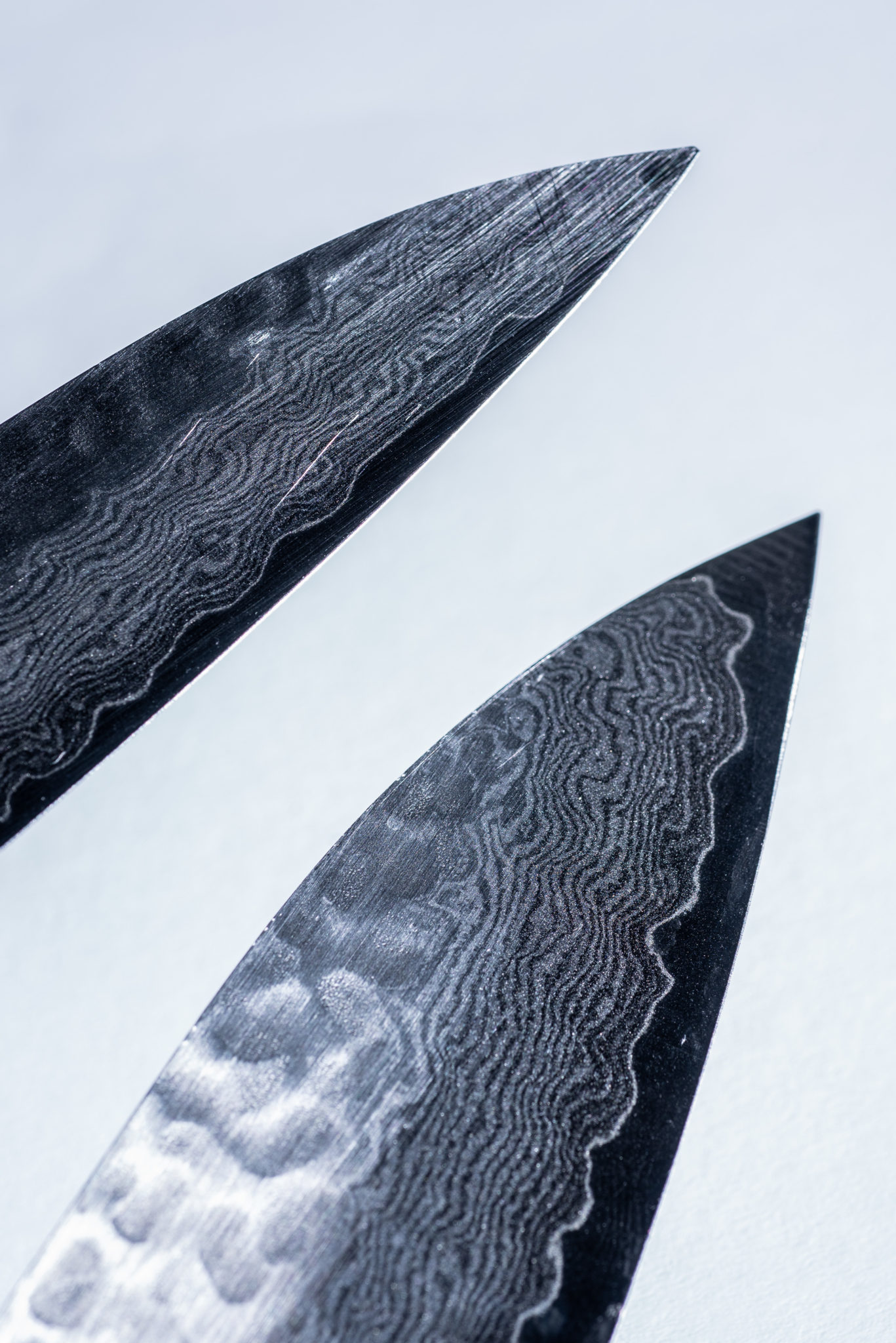
Share a tip to young chefs looking to buy their first professional knife
Choose carefully because knives are something that you should be able to use for a long time, ideally. One thing to consider is the tenderness of the steel. For instance, it can’t be too hard because it’ll be hard to sharpen the knife. Also, don’t buy knives with wooden handles because they’re generally forbidden in the kitchen. I do have knives with wooden handles, but they’re varnished. Another tip is to check online stores, you can find good knives there.
Agustin Figueroa, Parilla La Cabrera
What he needs
Knives with smooth edges that produce a very smooth and clean cut. Whether you are cutting something hard or soft, there is no tearing or ripping. Knives used for peeling also need to have a smooth edge.
Favorite knife
Wusthof. I like this German knife because it delivers a nice cut and all the cutlery of this brand is made from surgical steel, which makes it good quality and durable. I’ve always favored Japanese knives but after hearing about Wusthof and trying it out, I was really glad with them and decided to use them more.”
Price range
Around $100


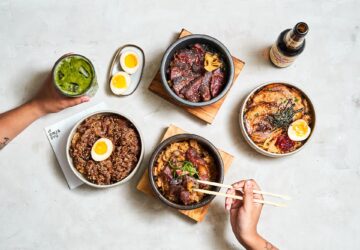
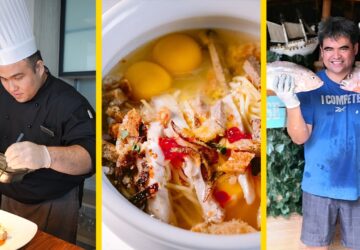

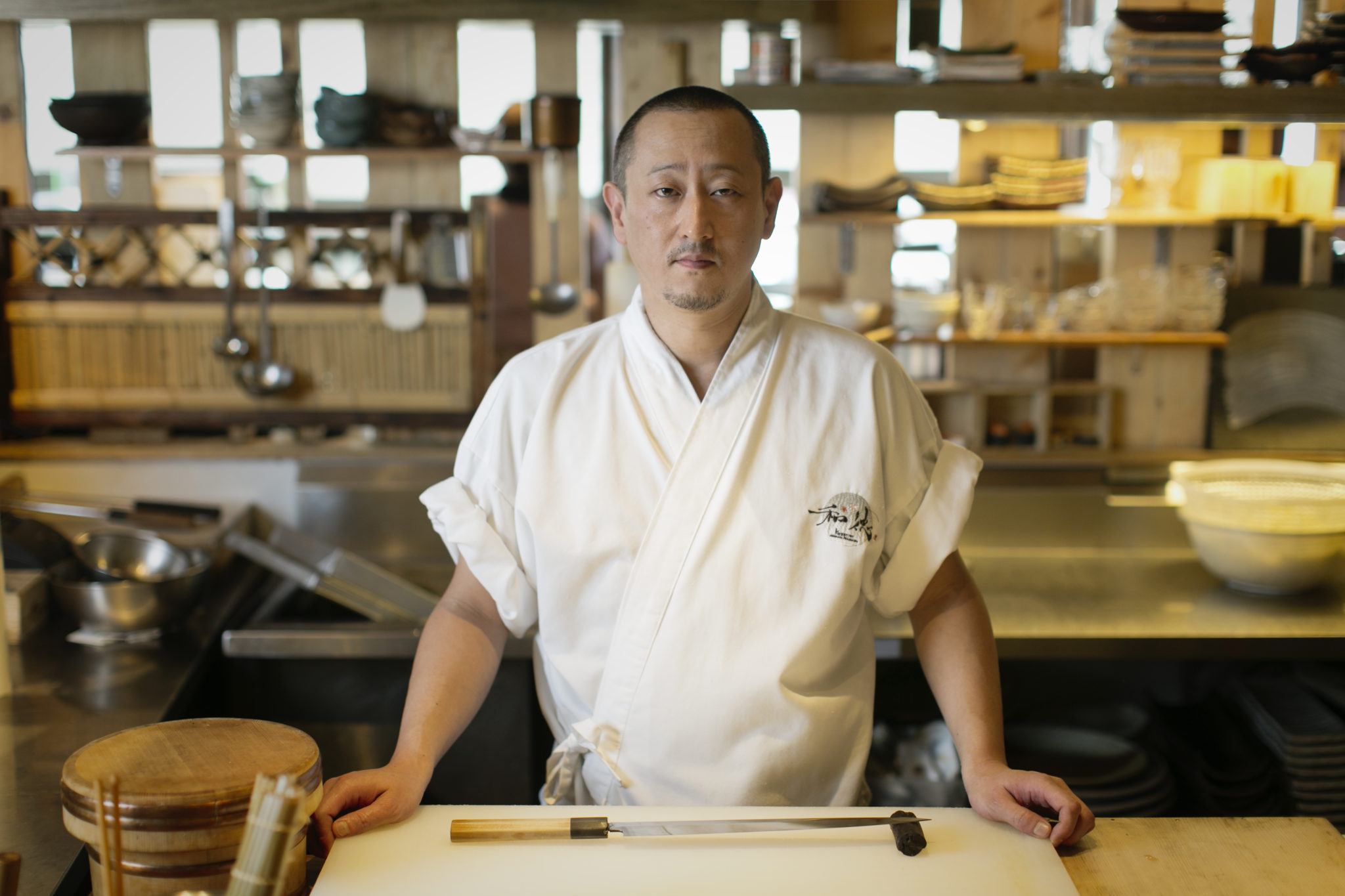
what kind of sharpener is best for knives???